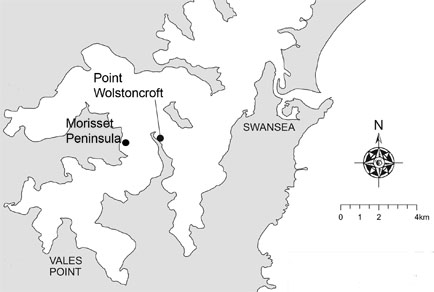Abstract
Anecdotal reports suggest that populations of razor clams, Pinna bicolor, have increased substantially in Lake Macquarie, New South Wales over the last 5-10 years. This has raised concerns about the ecology of the Lake and human safety. As a first step to providing information to inform management, between August 2009 and August 2010, we examined growth, population density, recruitment and the morphometrics of marked razor clams in a permanently marked grid in the southern reaches of the Lake. Growth increments of 61 P. bicolor were used to construct a Ford-Walford plot, from which von Bertalanffy growth parameters were calculated (K = 0.409 and L∞ (dorso-ventral measurement) = 235.192 mm). During the study period 24 P. bicolor recruited to the grid, increasing the population density from 0.15 m-2 to 0.20 m-2. Recruits ranged in size (antero-poste-rior measurement) from 177–241 mm, with a mean (± SE) of 215.4 ± 4.1 mm. Morphological variation was observed and was evident within the linear regression of shell length on shell height (r2 = 0.631). These observations confirmed that growth, den-sity and recruitment, as well as the degree of morphological variation within a population of P. bicolor in the warm temperate waters of New South Wales, is similar to that recorded for populations in South Australia and Western Australia.

